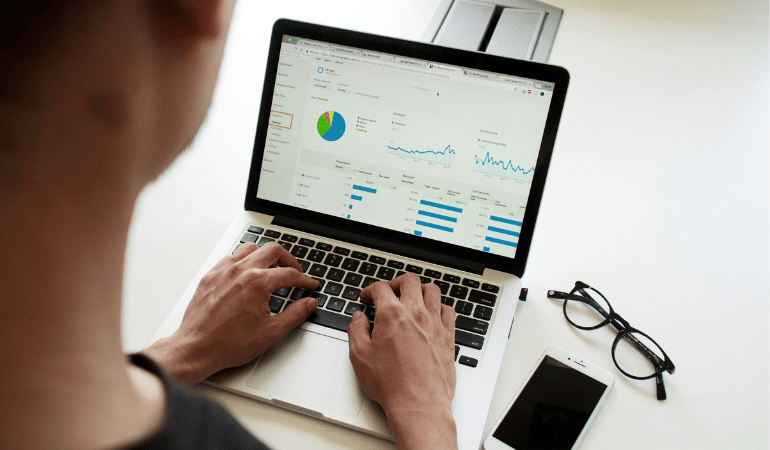Retailers today face unprecedented uncertainty. From supply chain disruptions to shifting consumer preferences, the landscape is marked by constant change. If businesses want to thrive, they need to proactively plan for the future using scenario planning.
Scenario planning is a strategic process for exploring possible future outcomes for your business. Data-driven scenario planning enhances this by using real-time insights and predictive analytics to create accurate and actionable plans.
This blog post will equip you with the knowledge you need to implement data-driven scenario planning in your business. We’ll discuss what it is, why it’s important, and how it can benefit you.
What is Scenario Planning?
Scenario planning helps businesses prepare for the future. It’s about creating different possible scenarios about what might happen, covering a range of potential outcomes from best-case to worst-case. This helps businesses prepare for various possibilities. The goal isn’t to predict exactly what will happen but to understand what could happen and have plans ready.
This practice can be implemented in a wide range of industries, from energy and healthcare to finance and technology. In retail and wholesale, scenario planning is particularly helpful for managing constant change.
Factual data, such as sales figures, customer behavior, and market trends, provides a solid foundation for building these future “stories.” This data-driven approach allows for a clearer understanding of potential future scenarios, which leads to better, more informed decision-making.
Scenario Planning vs. Forecasting
Although related, scenario planning and forecasting serve distinct purposes.
Forecasting uses historical data and current trends to predict a single, most likely future outcome. It’s useful for short-term planning, budgeting, and resource allocation when a degree of certainty is assumed.
Scenario planning, on the other hand, acknowledges that the future is uncertain. It creates different scenarios, providing businesses with the insights needed to develop plans for various potential futures. This makes scenario planning particularly valuable for long-term strategic planning, risk management, and situations with high uncertainty.
Essential Data for Retail Scenario Planning
Retail and wholesale scenario planning depends on data from several key areas:
- Sales Trends: Track sales data by product, region, channel, and time period to identify seasonal patterns, the impact of promotions, and overall sales performance.
- Customer Behavior Insights: Analyze customer demographics, purchase history, browsing behavior, return rates, and engagement metrics to understand customer preferences and predict future behavior.
- Supply Chain and Logistics Data: Monitor real-time stock levels, warehouse capacity, transportation costs, delivery times, and vendor performance to identify potential bottlenecks and vulnerabilities.
- Market Trends and External Factors: Track economic indicators, industry news, competitor activity, regulatory changes, and social trends to understand the broader market context.
Retail Insights from Data-Driven Scenario Planning
Data-driven scenario planning doesn’t just give you data; it gives you actionable insights that inform strategic decisions. Here’s how:
Understanding Demand Fluctuations
Scenario analysis allows you to see how different factors (economic conditions, promotions, seasonality) interact to affect demand. You gain insights into potential demand swings, allowing you to prepare inventory and staffing levels for various possibilities, not just a single predicted outcome.
Anticipating Supply Chain Disruptions
By simulating alternative scenarios such as port closures or supplier bankruptcies, you gain insights into your supply chain‘s vulnerabilities. You can identify critical dependencies and develop alternative strategies before a disruption occurs, minimizing its impact.
Predicting Customer Responses
Scenario planning helps you understand how customers might react to different market conditions (price changes, new product launches, economic downturns). You gain insights into potential shifts in buying behavior, allowing you to proactively adjust marketing, product offerings, and customer service strategies.
Evaluating Competitive Strategies
Scenario planning lets you model how competitors might behave under different circumstances. You gain insights into potential competitive responses to market changes, enabling you to develop strategies to maintain or gain market share in various future states.
Assessing Financial Impacts
By incorporating financial data into your scenarios, you gain insights into the potential financial implications of different outcomes. This allows for more informed budgeting, resource allocation, and investment decisions, mitigating financial risks and maximizing potential returns.
Key Benefits of Data-Driven Scenario Planning
Data-driven scenario planning offers a wealth of benefits for retailers and e-commerce businesses, enabling them to navigate uncertainty and thrive in a dynamic market. Here are some key advantages:
- Better Inventory and Supply Chain Management: Data-driven scenarios enable proactive inventory adjustments, preventing overstocking and stockouts, improving cash flow, and reducing storage costs and losses. They also optimize warehouse operations, logistics, and vendor relationships.
- Enhanced Customer Experience: By anticipating demand shifts, businesses ensure product availability and improve service reliability, boosting customer satisfaction. Proactive communication about potential delays further manages customer expectations.
- Faster Response to Market Changes: Real-time data analysis empowers businesses to react quickly to market shifts, adapting pricing, promotions, and inventory allocation to meet evolving demand and stay ahead of the competition.
- Reduced Financial Risk: Scenario planning helps mitigate financial risks by anticipating challenges and developing contingency plans. Understanding potential financial implications allows for informed decisions about budgeting, investment, and resource allocation.
- Improved Long-Term Strategic Planning: Analyzing market trends and external factors enables businesses to align long-term goals with potential future realities, informing product development, market expansion, and other strategic initiatives.
Scenario Planning Process: Step-By-Step
Implementing data-driven scenario planning in retail and wholesale involves a structured process to navigate uncertainty and prepare for various potential futures. Here’s a step-by-step guide:
Step 1: Define Objectives and Scope
Define clear objectives for scenario planning and outline its scope within your business.
Identify key stakeholders across departments, including supply chain, merchandising, marketing, and finance, to ensure comprehensive representation.
Set a timeframe for the scenarios (e.g., 3-5 years) and specify which business areas will be analyzed.
Step 2: Gather and Analyze Data
Gather and analyze key data from both internal and external sources. Internally, review sales data, inventory levels, and operational metrics. Externally, assess market trends, consumer behavior, economic indicators, competitor strategies, regulatory changes, and supply chain dynamics.
Use advanced analytics tools to uncover insights and identify patterns that will inform scenario planning. Based on this data, identify the driving forces—key factors that will shape future scenarios—which is a crucial step in the scenario development process.
Step 3: Identify Critical Uncertainties
From the driving forces identified in Step 2, choose two or three that are both highly impactful and uncertain—these are your critical uncertainties.
For example, a retailer might focus on “consumer spending power” and “supply chain resilience.” For each, define the best-case and worst-case scenarios to understand the potential range of outcomes.
Step 4: Develop Plausible Scenarios
Create a business matrix plotting your chosen critical uncertainties on the axes. This creates four quadrants, each representing a distinct scenario. Describe each scenario as if it were happening now. What would the business environment look like? How would customers behave? What condition would your supply chain be in? Consider how these factors interact.
For example, one scenario might pair “low consumer spending power” with “disrupted supply chains,” while another combines “high consumer spending power” with “robust supply chains.”
Step 5: Develop Strategies and Action Plans
Bring your team together to evaluate each scenario’s impact. How would your current strategies hold up in these potential futures? Identify strengths, weaknesses, and gaps in your approach.
Next, develop flexible response strategies that allow your business to adapt quickly as conditions change. Focus on actions that work across multiple scenarios, such as contingency planning, supplier diversification, or exploring new business models.
Step 6: Implement, Monitor, and Adapt
Put your strategies into action and continuously monitor market conditions, consumer behavior, competitor moves, and supply chain dynamics. Update scenarios and strategies as needed to stay ahead.
Set key performance indicators (KPIs) and trigger points to detect shifts toward a specific scenario. Regularly review and refine your approach—at least once a year, or more often in a rapidly changing environment—to keep your business agile and prepared.
Best Practices for Successful Scenario Planning
Successful scenario planning requires more than just a structured approach; it also demands strategic thinking and adherence to best practices. Here are some key guidelines to ensure your scenario planning efforts deliver valuable results:
Ensure Data Quality and Integration
Accurate, up-to-date data is the foundation of scenario planning. Integrate sales, inventory, and supply chain data to create a complete business view. Avoid data silos, as they can lead to flawed insights and inaccurate scenarios.
Leverage Automation
Automating data collection, cleaning, and analysis saves time and improves accuracy. Machine learning-powered forecasting enhances predictions, while automated scenario testing helps assess potential business impacts quickly.
Involve Key Stakeholders
Scenario planning should be a collaborative effort involving finance, marketing, operations, and sales. Each team brings valuable insights, ensuring strategies are aligned with business goals and fostering company-wide buy-in.
Regularly Review and Update
Markets change constantly, so scenario planning should be ongoing. Regularly update scenario building efforts based on the latest data and trends. Set a review schedule to keep strategies relevant and adaptable.
Best Scenario Planning Tools
Effective scenario planning relies on accurate, real-time data to anticipate changes and build flexible strategies. Here are some of the best tools to support scenario planning:
Market Intelligence & Industry Research Tools
Understanding industry trends, economic conditions, and competitor movements is crucial for scenario planning. Market intelligence tools provide access to consumer behavior insights, demand forecasts, and sector-specific analysis, helping businesses anticipate opportunities and risks before they unfold.
Supply Chain Analytics Software
Supply chain analytics tools allow businesses to monitor supplier performance, track logistics disruptions, and optimize inventory flow. By using real-time tracking and predictive modeling, companies can anticipate bottlenecks and adjust sourcing strategies to maintain operational stability.
Financial Planning & Forecasting Software
Financial forecasting tools help businesses analyze cash flow, assess profitability, and model potential risks. These solutions provide scenario-based financial projections, allowing businesses to prepare for different economic conditions and maintain financial resilience.
Data Analytics & Visualization Platforms
Advanced analytics tools help businesses process large datasets, visualize trends, and identify patterns that impact operations. With predictive modeling, decision-makers can evaluate different scenarios and understand how variables interact, making their planning more precise and actionable.
BrightPearl
While all of the tools above provide valuable insights, they work best when integrated with a comprehensive retail operations platform like BrightPearl. Unlike standalone analytics or forecasting solutions, BrightPearl centralizes key business data, including:
- Actionable Insights: Real-time sales, inventory, and financial performance data for informed decision-making.
- Predictive Forecasting: Automated demand forecasting to anticipate and respond to market shifts.
- End-to-End Integration: Seamless connection with supply chain and financial tracking tools for a complete operational view.
- Flexible Scalability: Automation and adaptability to quickly adjust as business conditions evolve.
By using BrightPearl as the foundation for scenario planning, retailers and wholesalers can combine internal and external data sources, improve forecasting accuracy, and develop agile response strategies—ensuring they are prepared for whatever the future holds.
Future-Proof Your Business with Data-Driven Scenario Planning
Anticipating challenges and opportunities is key to staying competitive. Data-driven scenario planning enhances decision-making, improving demand forecasting, inventory management, and risk mitigation.
Strong forecasting and real-time insights enable faster adaptation and better resilience in a shifting market. Regular updates ensure scenario planning projects remain aligned with current trends and business conditions.
BrightPearl’s powerful tools provide the insights needed for scenario modeling and smarter decision-making. Take control of the future—book a BrightPearl demo today!




